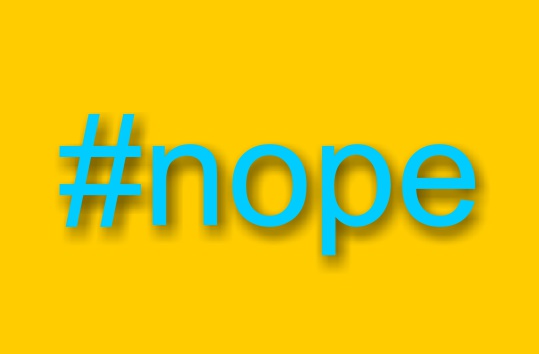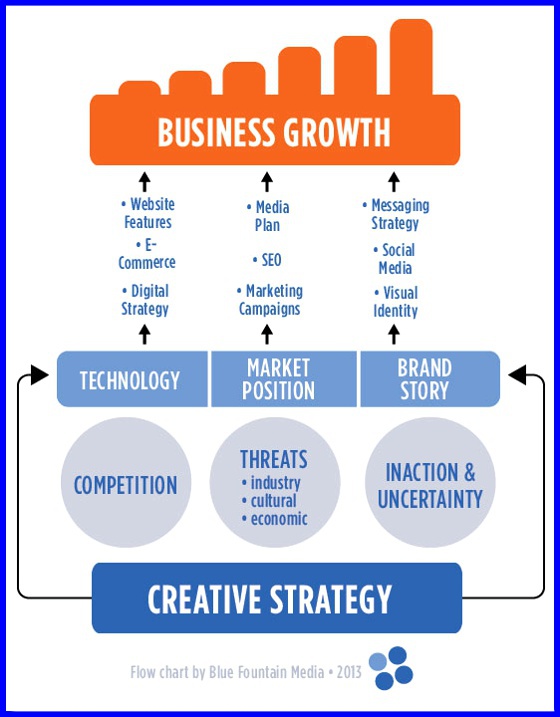Our Latest Blogs
Our Solutions News Blog was envisioned to gather and share information from the very best to help you and your business to become more effective.
Our Solutions News Blog was envisioned to gather and share information from the very best to help you and your business to become more effective.
"Clients are beginning to associate the tactile experience of print with luxury. Digital is cheap, fast, and easy. Who want's to be identified with any of those things?" MARY-FRANCES BURT, Creative Director, Burt&Burt
"Print communications have potential to bring a more unique, engaging and memorable experience to the audience than digital communications. Personally, I prefer the printed page for certain information because of the flexibility in presentation, the tactile qualities, the construction and the protability...I find digital presentations too repetitious and boring after a short period." PHILIP MCCORMICK, Owner, Design Works
" Print still has an impact on communication. In a fast paced digital world where things change every minute, the tactile presence of a printed piece feels more permanent and special." SUE TAUBE, Art Dirctor, Taube/Violane, Inc.
Consumers Still Trust Traditional Media Over Online Ads % of North American consumers who trust the following forms of advertising:
Click HERE »» to Discover Ten Top Reasons to Print
Source: The Modern Media Mix / Written By: Domtar / GDUSA 2014 Print Design Survey

When it comes to business, we talk too much about social media and expect too little. It’s like the old joke about sales people: one person says, “I made some valuable contacts today,” and the other responds, “I didn’t get any orders, either.” Companies measure the market results of their sales investments. But few have measures or even have accountable managers in place for their social media investments, and only 7% say their organizations “understand the exact value at stake from digital.” Meanwhile, according to a Gallup survey, 62% of U.S. adults who use social media say these sites have no influence on their purchasing decisions and only 5% say they have a great deal of influence.
Consider:
Technology changes fast — remember MySpace and Friendster? — but consumer behavior changes more slowly. As a result, people tend to overhype new technologies and misallocate resources, especially marketers.
When banner ads first appeared their CTR was 10%, but that soon fell due to heavy usage by firms, and clutter. Research has long demonstrated that ad elasticities are generally very low, that firms often persist with ineffective ad media (because they have the wrong measures or no measures), and that companies routinely over-spend on ads (due to ad agency incentives, the fact that ad expenses are tax-deductible, and companies’ use-it-or-lose-it budgeting processes). Other research indicates that traditional offline consumer opinion surveys (when they use representative samples) are better at predicting sales than clicks, number of website visits or page views, positive or negative social media conversations, and search (although online behavior is good at tracking the reasons behind week-to-week changes in sales.)
With new media, therefore, great expectations are common and missing the goal is understandable: it takes practice and learning. But changing or dismantling the goal posts is a different story.
It’s now common to say that social media is “really” about awareness, not sales. Companies that “get” social media should be “relentless givers [who] connect instead of promote.” In fact, forget “traditional” ROI (that lovely qualifier), focus on consumer use of social media and, instead of calculating the returns in terms of customer response, measure the number of visits with that social media application. How convenient: to be evaluated with a metric without tangible marketplace outcomes. But it’s wrong, a circular argument, and smart companies should not follow this flawed business logic.
The value of any advertising, online or offline, depends on what effects it has on purchases. As Bill Bernbach, David Ogilvy, and other ad execs have emphasized, “our job is to sell our clients’ merchandise, not ourselves.” Those effects are difficult to measure, because consumers buy (or not) for many different reasons and even good ads in the right media have both carryover and wear-out effects that vary over the product life cycle and an ad campaign. But to justify an investment by activity and not outcomes is a tautology — we advertise because we advertise — not a meaningful business argument.
Even an activity measure, moreover, assumes the consumer can see the ad. Did you know that a display ad is deemed “viewable” if at least half of each ad is visible on your computer or smart phone for a minimum of one second? Data released in 2014 by comScore indicated that more than half of online display ads appear on parts of a web page that are not viewable. In response, the Interactive Advertising Bureau noted that for various reasons 100% viewability is “not yet possible,” but the industry should aim for 70%. In other words, hope that “only” 30% of your intended ads are not seen by anyone for at least a second!
Further, what we now know about shopping and social media activity says that online and offline behavior interact. They’re complements, not substitutes, and you ignore these interactions at your peril. The vast majority of communications on social media sites are between friends who are within 10 miles of each other. The same is true about the available data on buying behavior. As Wharton professor David Bell documents, the way people use the internet is largely shaped by where they live, the presence of stores nearby, their neighbors, and local sales taxes.
For years now, we have heard big talk about the big data behind big investments in social media. Let’s see who is behind the curtain. It’s time to expect more from social media and prove it. The Association of Advertising Agencies has refused to endorse the 70% goal and wants 100% viewability, which means if an advertiser buys 1 million impressions from a site, that site must display that ad as many times as it takes to ensure a million viewable impressions. In 2014, The Economist guaranteed those who buy space on its apps and website that readers will spend a certain amount of time there. For instance, it will guarantee that a site containing an ad appearing for three weeks will receive X hours of readers’ attention — documenting, not assuming, engagement with the medium.
Other companies try to trace the links (or not) between online platforms and sales outcomes. They buy point-of-sale data from retailers and have systems that purport to match Facebook or Twitter IDs, for example, with a given campaign and subsequent retail sales for a product. The validity of these approaches is still to be determined. And the FTC has raised concerns about privacy issues and disclosure practices, and has urged Congress to pass legislation to give consumers the right to opt out. But shining light on what does and doesn’t happen here will be a good thing.
Business success requires linking customer-acquisition efforts with a coherent strategy. You can’t do that if you are not clear about the differences between hype and reality when it comes to buying and selling. And we should care about this distinction for reasons that go far beyond making even more ads more viewable. Companies’ abilities to make better use of their resources are important for society, not only shareholders. It spurs productivity, and productivity — not just tweets and selfies — is what spurs growth.
Source: Harvard Business Review / Written By: Frank Cespedes
As organizations flatten out, employees don't have to corner senior management in an elevator to get their thoughts heard. They could just schedule a meeting, or even walk up to a leader's office or desk. So is there even a need to have an elevator pitch at the ready?
Absolutely. Although accessibility to managers has increased, the amount of time those managers have at their disposal has decreased. And that means the clearer, crisper, and more concise you can make your idea, the more likely it is that your senior-level listener will tune in.
Salespeople trying to connect with C-level prospects should have a variety of pitches at their disposal, but each should adhere to the principles of the classic elevator pitch. This infographic from Bplans explains each component of an elevator pitch to ensure you hit the highs and provide all the necessary information. Just remember that brevity is a virtue -- according to the graphic, an ideal elevator pitch should clock in at a minute or less.

Source: Hubspot / Written By: Emma Snider

Company culture is something that is very close to me. I refer to myself as an HR-driven CEO, and I mean it. If someone at VaynerMedia is unhappy, it is entirely my fault. Period.
Because of that, I spend a good amount of time making sure my ideas on company culture are loud and clear. Not all companies have great culture, and it can be difficult to change when it’s been one way for so long. But it is possible to improve and shift until those changes are permanent.
The first step is something tactical, something you can execute on right away. I don’t care where you work, you probably have had a meeting that you found to be totally useless, right? This piece of advice is practical as hell, and it’s this: Cut all meetings in half. Seriously. Meetings can be some of the least productive places in an office, and when people feel like their time is being wasted, they get upset, and feel undervalued. Cut meetings in half. I promise everything will still get done, you’ll just eliminate the banter and tangents that usually happen.
The second step I would advise you to take: Hang around. Yes, seriously. Find ways to shift your busy schedule so you can be in the office more. Spend as much time with your employees as you can, and not just leadership. Everyone. Let them learn by being around you. Emulate the culture you wish to have and let people soak it in. Learning by osmosis can be tremendously successful in this regard.
When you’re doing that, there is one thing you need to do that might not be the first thing on your mind, and that is to listen. The best way to get things done is to be a great listener. No one ever talked their way through a problem. And this is step three. Straight up. Not only do you need to be a great listener, but you need promote that standard within the company. Hire for this skill and you will not be sorry, especially when looking for project managers. Someone who can listen without interrupting and asks a lot of questions is a good listener.
And what about hiring? That absolutely plays into company culture, of course. Let those doing the hiring learn by osmosis, like I talked about above. If you’re someone who has a hard time choosing between candidates, my answer is this: Hire like you mean it. Don’t hesitate with decisions; just make a damn call. At some point, you have to just do it. And if you're going "No Gary, seriously they're both great" ... maybe you need to hire both of them. Figure it out.
Now, you’re probably wondering what the last piece of advice is going to be, right? What is the ending thought I am going to leave you all with? Well, you might be saying right about now “Gary, this is all great, but what if my company culture is just seriously messed up?” I hear that. I get it. Sometimes things are just so bad you aren’t sure how they got there. And to that, here is my final, last ditch effort piece of advice: Nix the leadership. Everything stems from the top. They are the ones who set the tone in meetings. They also control the overall sentiment individual teams have, since employees look to leadership as a guide. If the system is broken, fix it by refreshing your team.
Now I want to see you execute on these steps. If you need to change company culture, take action. Now. Nothing will happen till you actually make the moves. It’s all about execution. You could read 10 more articles like this, but who cares. In the end, you have to go for it. Who knows; your company future could be in the balance here. Culture should be your priority, and that starts now.
Source: HubSpot Blog / Written By: Gary Vaynerchuk
There were hundreds of business books published last year. With so many books to choose from, it's nearly impossible to figure out which ones you should actually read.
We decided to simplify things for you. Similar to the way Nate Silver aggregates political polling data, BookBub aggregated 23 different "Best Books of 2014" lists -- from The New York Times to The Financial Times and more. After aggregating all the lists, we ranked the most frequently listed books, and compiled those into one big list.
The top business-related results are in the infographic below. Check it out below to learn which books made the cut.
(Note that these are just the business books. If you’re looking for the overall list, including fiction and other genres, head over to the BookBub Blog.)

Source: Hubspot / Written By: RIck Burnes

Many marketing benchmarks are easy to assess: sales, web traffic, SEO, social engagement and conversion rates. These results are tracked with hard data and as a result success is measurable. If one tactic isn't working, it's easy to try another.
But not so fast. Results are the final outcome of a marketing initiative - but where do these results originate? Let's trace back the steps. Before every successful conversion there is a strategy in place. Before every strategy is a creative idea. And all good creative ideas are fueled by extensive research and insights. This is the purpose of Creative Strategy: to set the foundation for business growth in three simple steps: 1) research 2) creativity 3) strategic planning.
Creative Strategy is essential to any marketing plan or new website, and good Creative Strategy should address the following five foundations that impact business growth:
1) Identify needs / determine goals
The only way to get a clearly defined answer is to ask clearly defined questions. A well thought out Creative Strategy will uncover the most pertinent business/brand needs to address and leverage consumer/industry insights to illustrate a custom solution.
2) Figure out a roadmap
Solutions are a great starting point - but how do we get there? It's the job of a Creative Strategist to determine the most effective way to get from Point A to Point B. What threats stand in the way and how can they be avoided? What mistakes have other businesses made and how can they be learned from? Creating a roadmap that addresses these questions is essential to mobilize your team with a bird's eye view of clear next steps.
3) What's happening?
Simply put, a Creative Strategy must be informed. What's going on in your industry? What is the competition doing? What new technology is on the horizon? What's going on in the digital and social space? A roadmap can't weave through the complexities of the business world without being well informed on what's happening...everywhere.
4) Tell a story
Content drives online success, but what drives content? A brand's point of view - their story - should set the foundation for all communication efforts. What is your brand's unique perspective and position? This will determine your messaging strategy and visual vocabulary. Every audience loves a story. What's yours?
5) Influence behavior
Great - the goals are now determined and the plan is in place. Now, what is the desired action we want the end user (the audience) to take? The more specific the action, the more effective the conversion will be. By establishing direct calls to action and intuitive online pathways for users, the strategy will translate into consumer-focused terms that are both relatable and relevant.

In the interest of long-term brand success, it's important to set a stable foundation and not take short cuts. It's not always directly measurable, but a sharp Creative Strategy is evident along every brand touch point, and can set the tone for messaging, design and marketing for years to come.
Source: Blue Fountain Media / Written By: James McCrae
According to The Architect's Journal's first Women in Architecture Survey the percentage of women in architecture has fallen over the past few years. When searching for a solution to the current situation, it's best to look back to see how far women have come and better understand where we go from here.

Source: ArchDaily

Color, it can attract, influence, and even increase retention. Color is a powerful tool for any business. The way you present your company’s ideas with the use of color in printed material is becoming an increasingly important issue. Studies find that using color in your documents is both impactful and influential. Xerox recently commissioned a study online by Harris Interactive about why your boss should let you print in color.
Let’s look at a few of the findings. In the study it was found that 25% of the respondents print using color to improve retention but in the survey 69% of the respondents stated that they understand new ideas better when they are presented in color. It would seem to make sense that printing in color will help to get your ideas and messages read, understood and remembered. In the study 21% of the respondents print in color to reduce search time but the study found that 76% of the respondents think they can find information faster if it is printed in color. So wouldn’t it make sense to print things in color so that more people can find the information that you are trying to share with them in less time?
Research has shown that using color in business can dramatically improve communication, enhance productivity, and boost sales. So as color becomes increasingly affordable and easier to control there will be an ever increasing use of color in printed material and CAD plotting. Xerox provides many printers and multifunction printers that provide color printing.
Source: Xerox Blogs / Written By: Cheryl Otstott
When it comes to spending time marketing on social networks -- whether you're marketing your company or marketing yourself -- you're constantly deciding where to spend your time, and how much time to spend. How much time should we spend on each network for it to be worth it?
It turns out that LinkedIn is one of the most powerful (yet often underutilized) social networks today. With a reported 313 million members, 40% of whom log in daily, LinkedIn is not a network to write off. It's an extremely powerful and fast-growing professional networking tool.
To make sure we're all using it to its full potential, Ethos3 pulled together some very useful, very tweetable quotes in the infographic below.

Source: Hubspot / Written By: Lindsay Kolowich

With December only one month away, that means one thing — it’s time to send out those end-of-year holiday greetings again.
For friends and family, that might be as simple as shooting off a text message, but for clients & colleagues printed cards still score top marks.
While adding standard best wishes to a greeting card, a few questions about how to write them properly often come up. For instance, should it be “Seasons Greetings” or “Season’s Greetings”? Should “holiday season” be capitalized? And what’s the preferred spelling for “Hannukah”?
So, before you head to your office’s card signing party — or sit down to tackle your own list — consider these guidelines for 10 common holiday greetings:
Chances are most people will care less about your grammar and more about the sentiment of your greetings. So, whether you use these guidelines or not, remember to take a moment to send well wishes to clients, colleagues and friends.
Source: Ketchumblog / Written By: Calmetta Coleman

Creating a business sign that stands out requires an understanding of what grabs attention and ultimately encourages customers to buy a product or service. There are many ways to design an attention-getting business sign, but follow these basic rules when it comes to style, content and messaging.
Keep It Simple
An attention-getting business sign needn't include tons of information. It's usually best to include only the most important, relevant information or key words for the product or service. Include the business' basic information and a couple of selling points that differentiate the company from its competitors. Always include a phone number and email address.
Make It Stand Out
While it's best to keep a business sign simple, make it pop with some unique features. Capitalize the letters of important words or make certain phrases bold. Give the sign a bright color or design it so it contrasts with the surrounding environment. A good business sign has at least one or two visual aspects that invite attention and require people to look more closely.
Keep It Proportioned
Design the sign so that visual aspect and text are well proportioned. Don't use several type sizes or place small pictures beside much larger ones. In general, the sign's information should be balanced for aesthetic appeal and readability. Stay consistent with colors and fonts. Don't place a small business sign in a large, empty area; if you have a small sign, position it in a smaller place where it will appear bigger.
Call to Action
An effective business sign usually invites new business by offering a call to action. For example, a sign for a nail salon might say, "Call today and get 20% off your next pedicure!" By giving readers an incentive to contact the business, the sign promotes the company while helping attract new business leads. Offer an incentive, discount or free consultation on the sign to attract more customers.
Source: eHow / Written By: Mara Tyler
Businesses continue to integrate social media into their marketing efforts at an impressive rate and many report that they have used social media to get more brand interactions, contacts, and new customers.
As companies continue to rely on social media sites to reach their business goals, it is important that they pay attention to the way social media demographics are growing and changing. Who is using social media? Which social networks do people use -- and how do they use them?
Search Engine Journal created the infographic, featured below, to help you answer all of these questions and more. Take a look at the infographic to discover a number of facts and statistics that you should know about how social media usage is changing.
![Growth Of Social Media [Infographics]](/images/stories/Newsroom/Growth-Of-Social-Media-for-BlogPost.jpg)
Key Takeaways
General Social Media
> Facebook, Twitter, and Google+ are the top three social media sites used by marketers.
> 93% of marketers use social media for business.
> 72% of all internet users also used social media as of May 2013.
> 71% of users use a mobile device to access social networks.
Facebook
> There are now more than 1.15 billion Facebook users.
> 70% of marketers have used Facebook to successfully gain new customers.
> One million web pages are accessed using a Facebook login.
> 47% of Americans say Facebook is their #1 influencer of purchases.
> 23% of Facebook users login at least five time a day.
Twitter
> 215 million people use Twitter every month.
> Twitter is currently the fastest growing social network with a 44% growth from June 2012 to March 2013.
> 34% of marketers have used Twitter to successfully generate leads.
Google+
> There are 1 billion registered users on Google+.
> 70% of brands have a presence on Google+.
> The +1 button from Google+ is used 5 million times per day.
Source: Hubspot / Written By: Sam Kusinitz

I've been a "yes"-sayer most of my life. I'm a bit of an impulse shopper, always down for an adventure, open to meeting new people or switching plans at a moment's notice.
This has opened many doors for me over the years, especially with bosses and colleagues who are happy with my eagerness and "can-do" attitude. But sometimes, the "yes-yes-yes" approach can be exhausting -- it ends up stretching me way too thin. With every new affirmative comes the quiet ritual of reprioritization, where I look at my to-do list and figure out where on earth the new request will fit in.
Sound familiar? Think about the last time you had to rework your to-do list to accommodate piling demands. Was it last week? Yesterday? This morning? There biggest reason this problem is so widespread is: Many of us are concerned about looking like jerks if we don't do everything our colleagues ask of us -- especially if the person asking is our boss.
I think Ed Batista, executive coach and instructor at the Stanford School of Business, said it best: "When faced with potentially overwhelming demands on our time, we’re often advised to 'Prioritize!' as if that’s some sort of spell that will magically solve the problem ... Here’s the problem. After we prioritize, we act as though everything merits our time and attention, and we’ll get to the less-important items 'later.' But later never really arrives. The list remains without end."
It might seem like every incoming request is important -- especially ones from your superiors. But that's not true. Here are a few tips that successful people follow to better prioritize.
Give yourself a minute.
It's easier to say "yes" in the moment, only to realize later that you probably don't have time. Instead of defaulting to "yes," ask questions about the project (steps, due date, etc.) to gauge how long it might take. And then tell your requester, "Let me look at my schedule and see if I can fit it in." That way, you can take a few minutes to analyze the request and see how it can fit in with your current priorities. Which brings me to my next point ...
Analyze incoming requests.
Even ones from your superiors -- they shouldn't be a given! In her book Rise: 3 Practical Steps for Advancing in Your Career, Standing Out as a Leader, and Liking Your Life, Patty Azzarello (whom Forbes calls "the original Marissa Mayer") reveals a little-known secret: Your boss needs help thinking through the things she requests of you just as much as you need help prioritizing them.
In other words, your boss doesn't want you to just do everything she asks you to do -- your job is to catch, record, and analyze all those asks, and then make judgments about which ones will have the biggest impact on the business. If you just do the things that will make a big impact on the business, you will be forgiven for the things you don't get done -- and that is a big secret to success.
Say "no" to requests that put your top priorities at risk.
Setting realistic expectations on our time is hard, but we have an even harder time saying "no" to our colleagues for fear of seeming unhelpful, not hardworking, not a team player, and so on. "There’s a fine line between effective triage and being an a**hole, and many of us are so worried about crossing that line that we don’t even get close," says Batista.
But in Rise, Azzarello reminds us that, while we can get away with not getting everything done if we deliver remarkable results on a few key things, we need to deliver those remarkable results -- otherwise, we don't have any success to offset why we didn't do better at everything else.
"Don't lose your nerve. Stick to it," she writes. "If you're tempted to work on everything because it feels less risky, just realize that you will remain unremarkable because you have not given yourself the opportunity to really excel on something that has a big impact on the business."
Your ultimate goal, according to Batista, is to confront the emotional discomfort of prioritizing tasks -- to "expand our comfort with discomfort." Saying "no" isn't easy, but it's incredibly important for career growth.
Source: Hubspot / Written By: Lindsay Kolowich

Someone once told me I interrupt a lot.
I was offended at first. "I'm just trying to show that I'm listening and on board with what you're saying." It'd be weird to just be silent while they talked. That comes off as disinterested, right?
Fast-forward eight years, and I'm glad I took that feedback to heart. I've stopped interrupting people, and instead use other cues to show I am interested and listening. Now, I find people talk a lot longer than they used to -- it's remarkable what they'll say when they're not afraid of getting cut off -- and interrupting has actually become one of my biggest pet peeves.
One place this has helped me a lot is in networking -- the more I can learn about a new person to whom I've been introduced, the better. Unfortunately, there's a ton of other conversational faux pas besides interrupting that can make it hard to establish a good connection with people. Let's examine some of those, and learn the impact it has on people in one-on-one or group conversations.
Close Talking
If you're not sure what a close talker is, watch Seinfeld media clip posted below:
Most people have a personal space bubble that, if you pop it, sends up alarm signals. It puts people on the defensive and causes discomfort -- not a great environment for a conversation. Respect people's personal space -- reaching in for a handshake only -- and you'll get conversations off to a good start.
Question Barraging
It's a good conversational technique to ask someone about themselves, but it can quickly turn into an interrogation if the questions remain directed at just one person for too long. Find opportunities to relate to the person's responses, instead of continuing to ask question after question after question. When you add your own experiences to the dialogue, it turns from an interview to a conversation.
Bonus: That common ground you establish while networking can lead to fruitful business opportunities. Remember, people do business with people they like and trust.
Staring Off Into Space
You know when you're in a conversation and it's kind of boring? Or you see someone else in the room you want to talk to? Or you have to pee and are scanning for a restroom? It's easy to let your eyes start drifting around the room, causing you to break eye contact with the person or people you're speaking with.
That sends a signal that you've moved on from the conversation, and aren't interested in what they have to say. And even if that's true, it's no way to establish connections. Worse, it just makes the other person feel crappy.
If you have to break off the conversation for one reason or another, use your words. Find a natural break in the dialogue, explain you have to excuse yourself for X, Y, or Z, and use it as an opportunity for your "ask" -- whether that's a business card, an interview request, or just a hearty handshake farewell.
Awkwardly Sidling
Have you ever heard that advice that when you're networking, "Just go up and join a group and see what they're talking about!"
It's fine advice, but it can really backfire if you're not prepared to enter the conversation gracefully. If you sidle up to a group conversation, be prepared to take in the topic of conversation and confident you can think on your feet enough to contribute to it. Otherwise, you risk being the weird person who sidled up to a conversation, said absolutely nothing, and made everyone else feel weird about your unexplained presence.
Dominating the Conversation
On the other end of the spectrum lies the person who just can't shut up. Again, conversations require two or more people to carry on -- give other people a chance to talk. Otherwise, you might find yourself on the receiving end of the "staring off into space" move.
Parroting
Parroting refers to conversationalists who simply repeat another version of what the other person just said. So you'd say something like, "Bananas are really healthy and have lots of potassium." The parroter would respond, "You're so right! Bananas are a great way to stay healthy and get lots of potassium." Not exactly adding much to the conversation, are we?
Often, parroters may think they're being encouraging and positive by reflecting back what their conversation partner has said, but too much of it can leave a conversation at a stalemate. Conversations are two-way streets -- be sure you're bringing something to the table to move it along. Being the only one talking is just exhausting.
Stirring Up Controversy
Among friends, sure, bringing up the latest piece of controversial news is okay -- it's a safe space, and you've aired strong opinions before. But networking events are not the place for it. While I've met a few people that have never shied away from airing controversial opinions no matter what/where/when, most people around them become instantly frozen with discomfort. The conversation makes people go from acting normal to scouting for the nearest exit.
Depending on the group you're talking to, light controversy might be alright -- for instance, if you're at an event with young people in tech, you're probably not going to offend anyone by bringing up twerking. But you've got to tread lightly here, and know your audience if you're willing to take the risk.
Forcing Your Opinion
On a similar note, not everything that's up for debate needs a concrete answer. If topics come up that have some gray area, embrace that gray area and the variety of opinions that come with it. Diverse opinions are perfect for fostering interesting, memorable conversation, but those who try too hard to assert their opinion as the opinion will quickly bring a friendly debate to a close.
Source: Hubspot / Written By: Corey Eridon